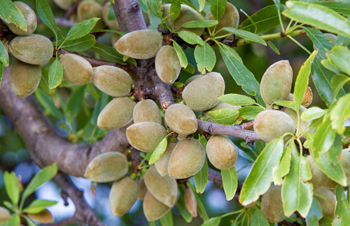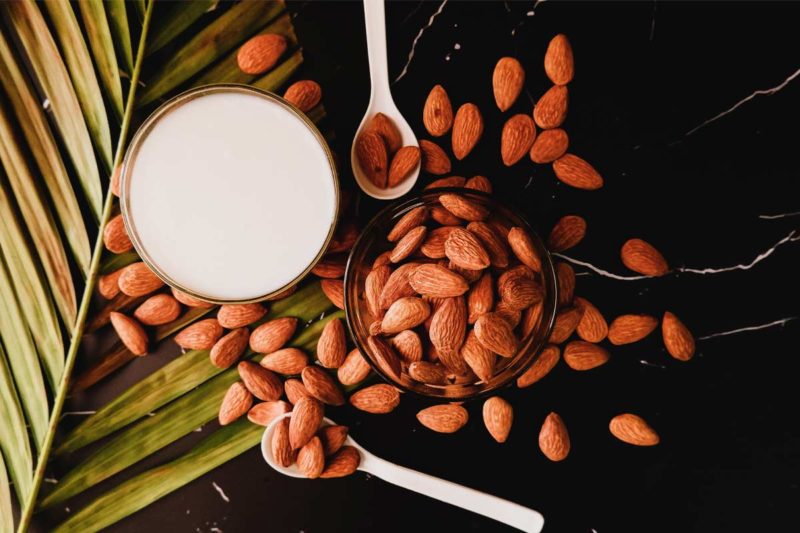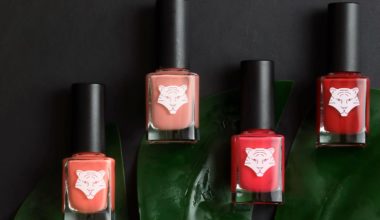“Almond milk is a good milk substitute”, “it’s better for you”, etc. Take our True or False quiz to test your knowledge with Estel Barellon, a Doctor of Pharmacy, naturopath and pharmacist.
It’s a trendy plant milk.
This is true. Among the many plant-based milks available in supermarkets and specialist organic shops, almond milk in particular is a front runner. In fact, according to the Futura site, sales have doubled in barely ten years. So how come it’s so popular? Well, people essentially opt for almond milk as a substitute for cow’s milk, not least in case of lactose intolerance. Because this plant-based milk, which has a pleasant taste not unlike that of actual milk, is also suitable as a dessert ingredient. Another reason is that it is also a good alternative for vegans and vegetarians.
It is a nutritious plant-based milk.
This is false. Of all the plant milks, it is not the most nutritious, even though it has a positive public image. Here in France, it accounts for two out of three plant-based milk purchases… Not bad! But despite its clear popularity, almond milk is not perfect nutritionally. So what is its main drawback? Added sugar, which shifts it from the “healthy food” category into that of “standard food”. So why do we like it all the same? Well, it’s a little lower in calories than cow’s milk (unless it’s full of sugar!). Almond milk, which is lactose-free and therefore more easily digested, has another major advantage: its high good-quality unsaturated fat content. Lastly, let’s not forget that almond milk, which is high in protein, fibre and magnesium, definitely capitalised on the GMO crisis that affected soy milk, which was very popular a few years back…
Young children can drink almond milk instead of cow’s milk.
This is false. At least, not before the age of three. Under no circumstances can almond milk replace breast milk or cow’s milk before that age, and it should only be part of encouraging a varied diet. So what’s best? Mixing things up and having them try other plant-based milks on rotation with cow’s milk (unless there are medical reasons precluding it, obviously). The idea is not to land them with a dietary “routine” (“at breakfast time it’s almond milk or almond milk”) that they will find difficult to break out of later on.
All almond milks are the same.
This is false. It is better to go for organic ones, especially those labelled “no added sugar”. But to get as varied a diet as possible, switch brands regularly. And to break the monotony, drink almond milk on rotation with other plant-based milks.
Almonds come mostly from California

This is true. They are grown in France, particularly in Provence, but the yield falls short of demand. The problem is that almond cultivation, which all too often is done very intensively, has unfortunately had the finger pointed at it for environmental reasons. Because it does require a great deal of water, which leaves the California soil parched. It has been said that it takes four litres of water to grow a single almond. So just think about that next time you munch on one. Californian almond production is often referred to as an environmental disaster (pesticide use, yields achieved via intensive farming practices, etc.). Not to mention the carbon footprint of shipping almonds from one continent to another. Basically, in the clean planet stakes, almonds are on a par with avocados.
You can make your own almond milk

This is true. It is! And the good news is that it’s very easy and more economical. Bear in mind that almond milk is sold at almost three times the price of cow’s milk… Worth saving on! To make your own almond milk, soak 250 grams of almonds in a litre of tap water for eight hours (or overnight – that’s easier still). The next day, whizz up the mixture in a food processor. Then strain it through a cloth. The liquid recovered (filtered through the cloth) is delectable homemade almond milk. Pour the drink into a glass bottle and put it in the fridge, where it will keep for five days. What do you do with what’s left in the cloth? Whatever you do, don’t throw it away! Use this “okara”, as this oilseed residue is called, as you would almond flour. Store it in an airtight container and use it in your sweet creations! If you do have more of a sweet tooth, you will find other recipes, including one for an île flottante (“floating island”) with almond milk, in the book by our expert Estel Barellon, a Doctor of Pharmacy, naturopath, pharmacist and author of Cuisiner pour se soigner [Cookery to remedy ailments] (Éditions Kiwi, available in French only). You’ll also find them on her blog and Instagram account of the same name.







